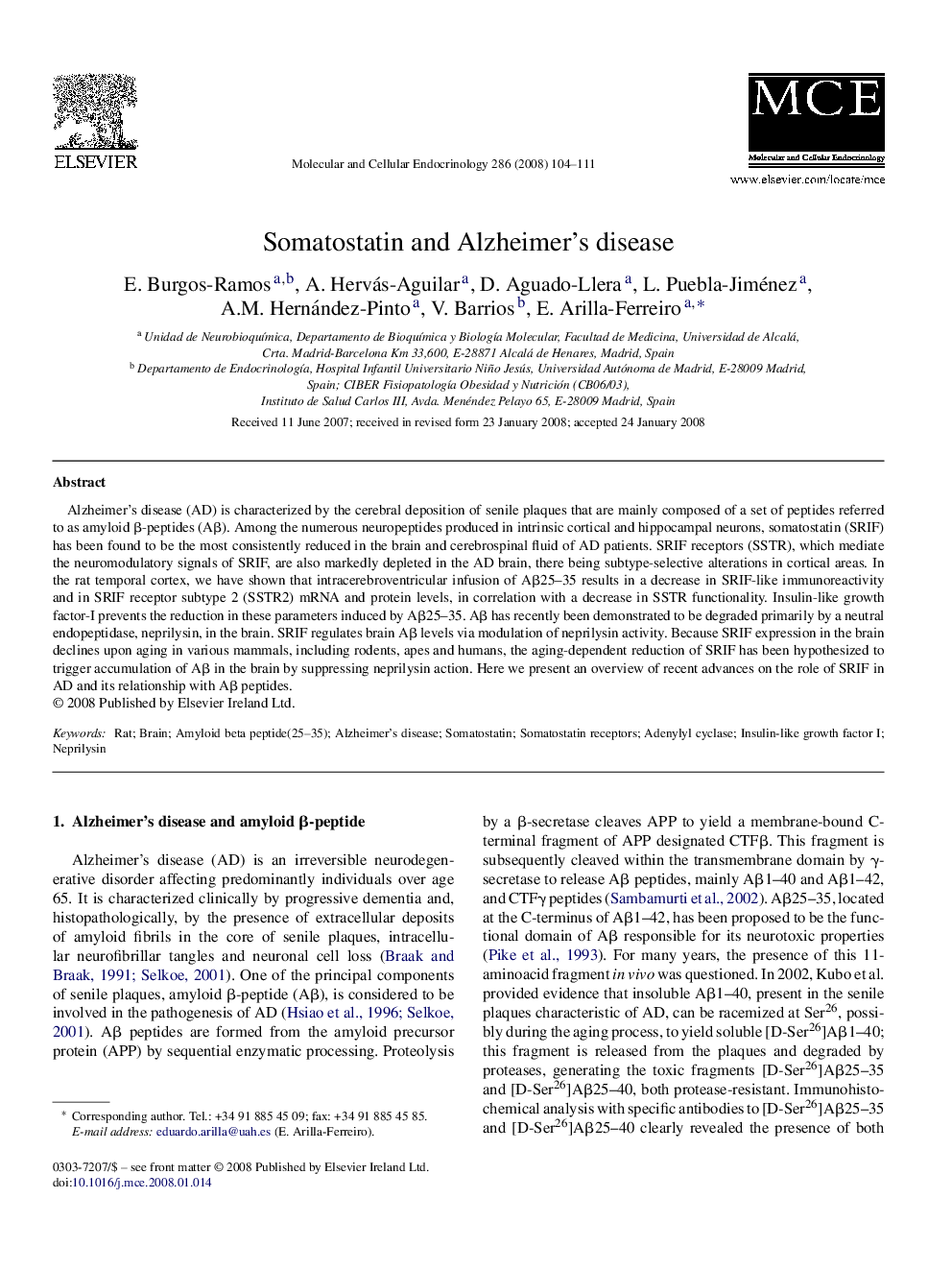| Article ID | Journal | Published Year | Pages | File Type |
|---|---|---|---|---|
| 2197653 | Molecular and Cellular Endocrinology | 2008 | 8 Pages |
Alzheimer's disease (AD) is characterized by the cerebral deposition of senile plaques that are mainly composed of a set of peptides referred to as amyloid β-peptides (Aβ). Among the numerous neuropeptides produced in intrinsic cortical and hippocampal neurons, somatostatin (SRIF) has been found to be the most consistently reduced in the brain and cerebrospinal fluid of AD patients. SRIF receptors (SSTR), which mediate the neuromodulatory signals of SRIF, are also markedly depleted in the AD brain, there being subtype-selective alterations in cortical areas. In the rat temporal cortex, we have shown that intracerebroventricular infusion of Aβ25–35 results in a decrease in SRIF-like immunoreactivity and in SRIF receptor subtype 2 (SSTR2) mRNA and protein levels, in correlation with a decrease in SSTR functionality. Insulin-like growth factor-I prevents the reduction in these parameters induced by Aβ25–35. Aβ has recently been demonstrated to be degraded primarily by a neutral endopeptidase, neprilysin, in the brain. SRIF regulates brain Aβ levels via modulation of neprilysin activity. Because SRIF expression in the brain declines upon aging in various mammals, including rodents, apes and humans, the aging-dependent reduction of SRIF has been hypothesized to trigger accumulation of Aβ in the brain by suppressing neprilysin action. Here we present an overview of recent advances on the role of SRIF in AD and its relationship with Aβ peptides.
